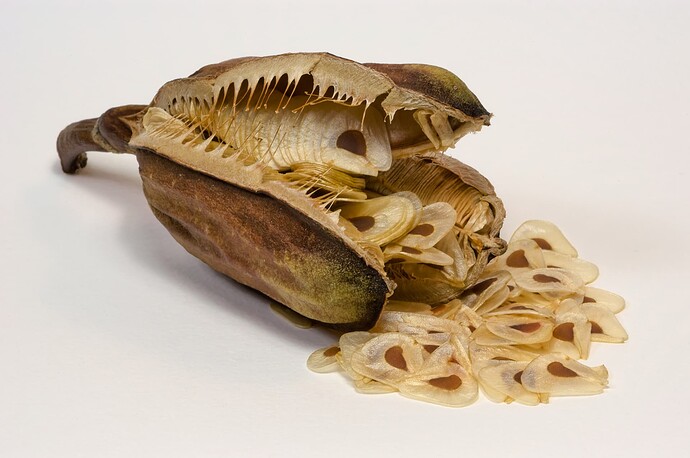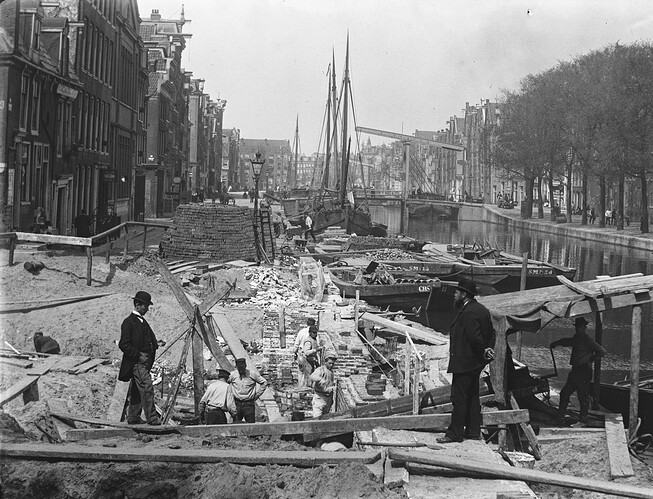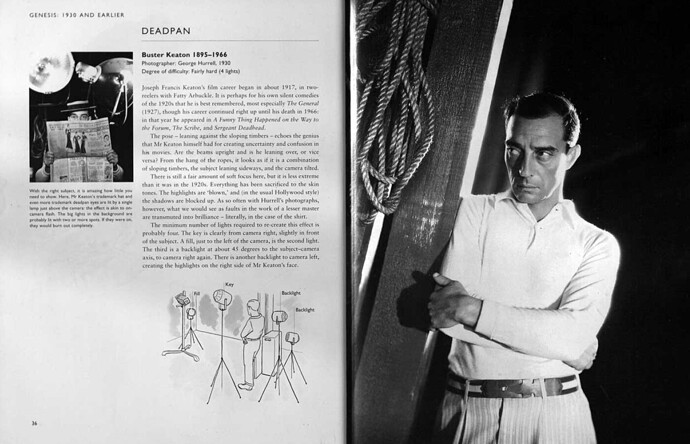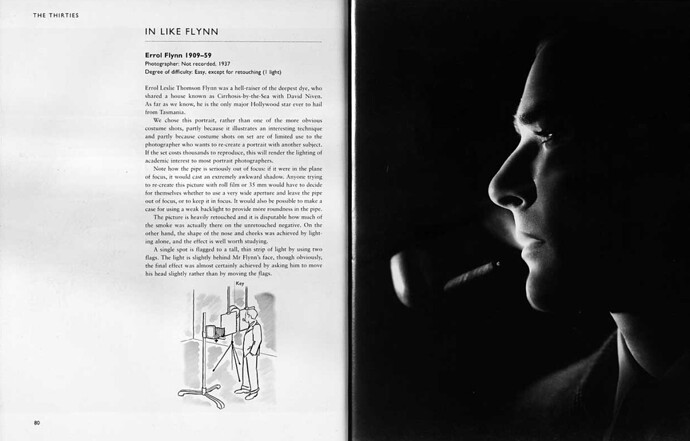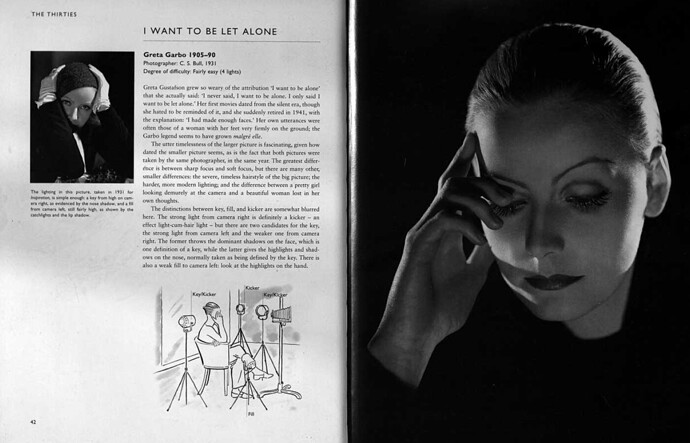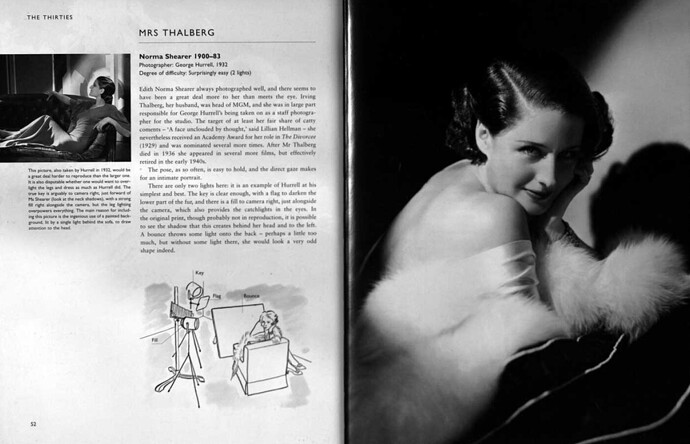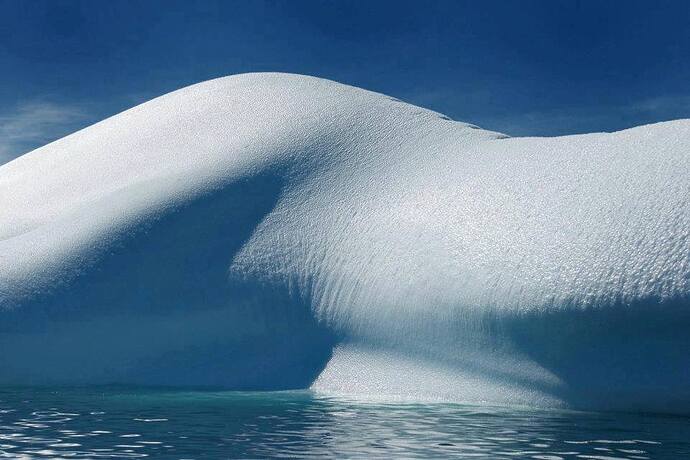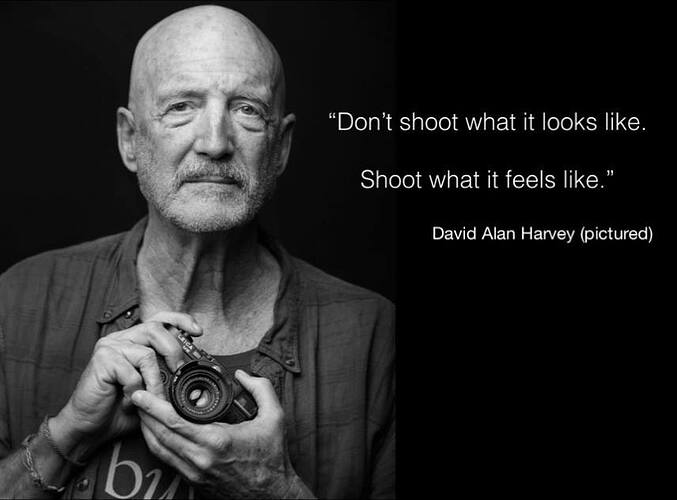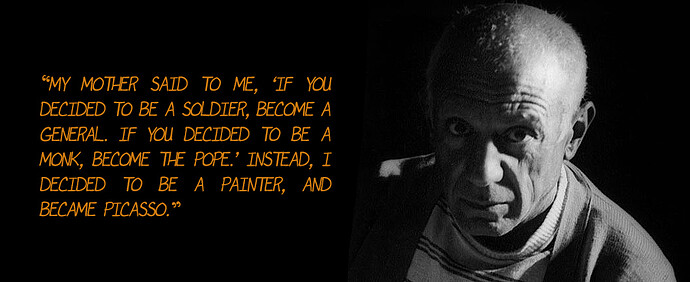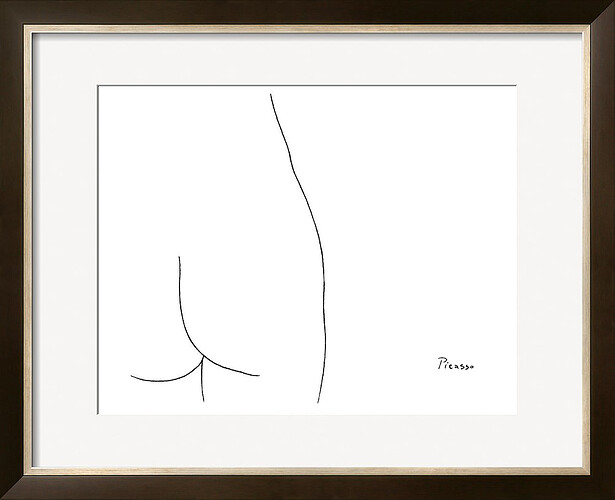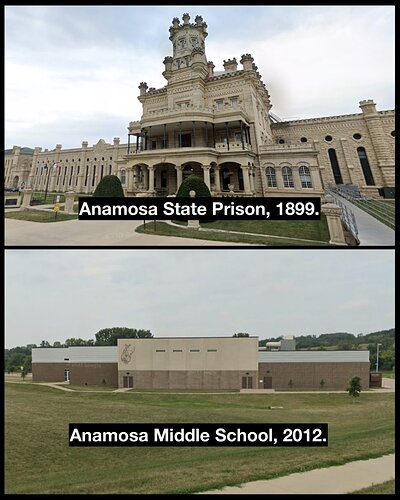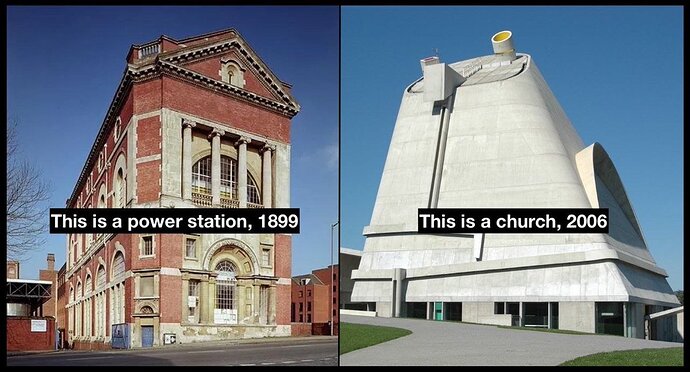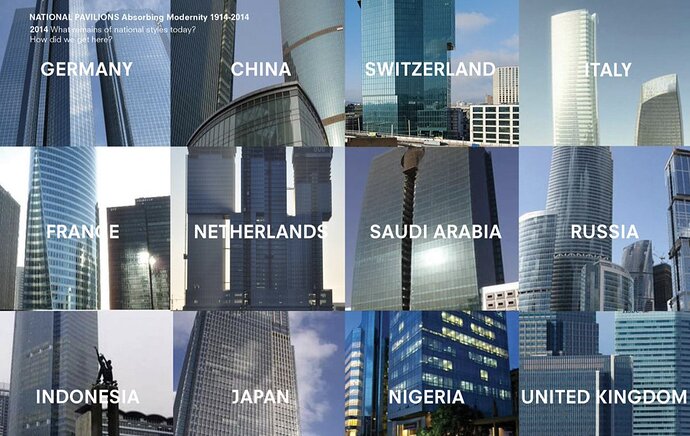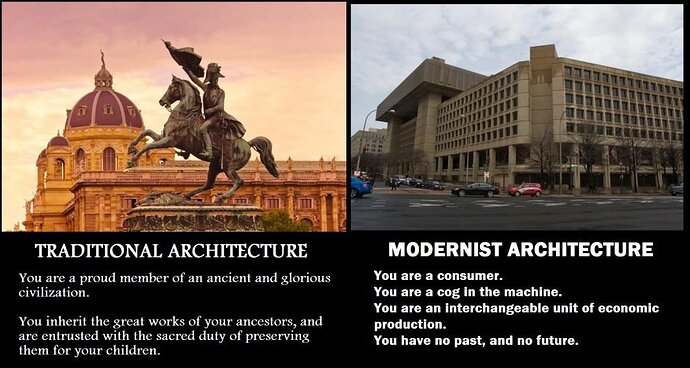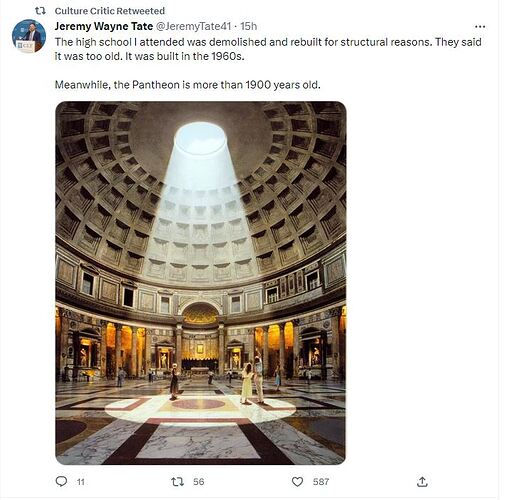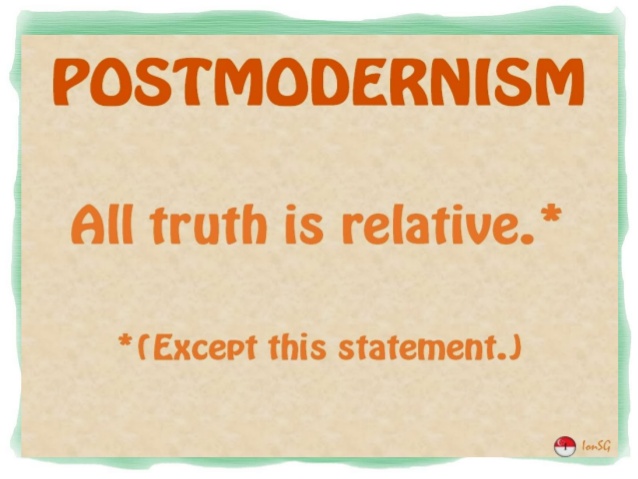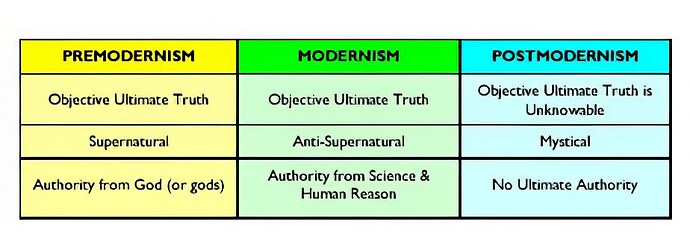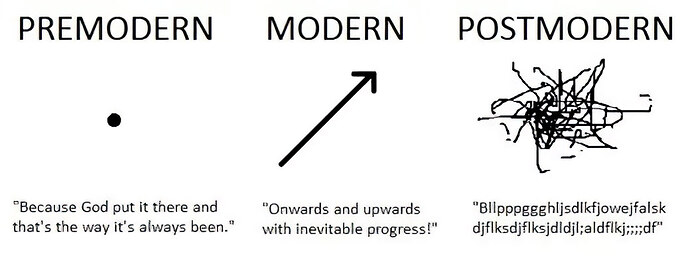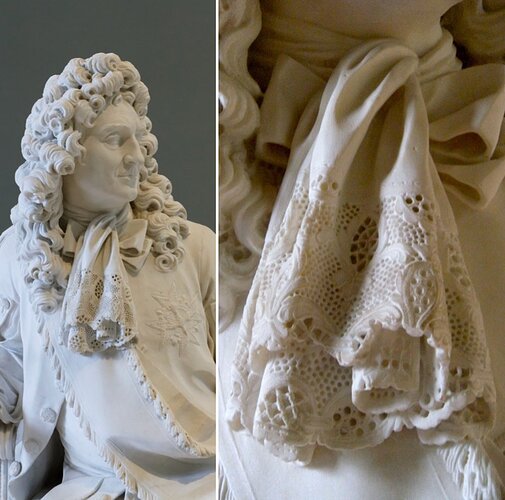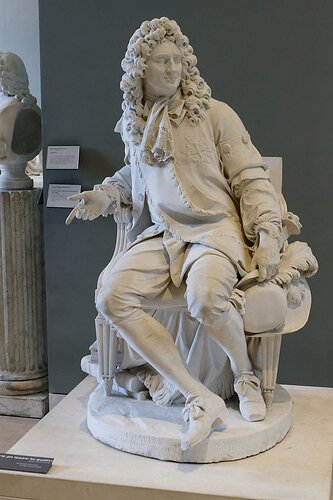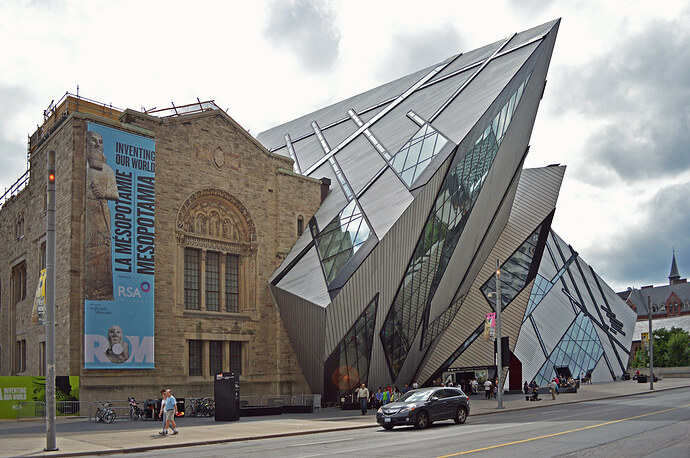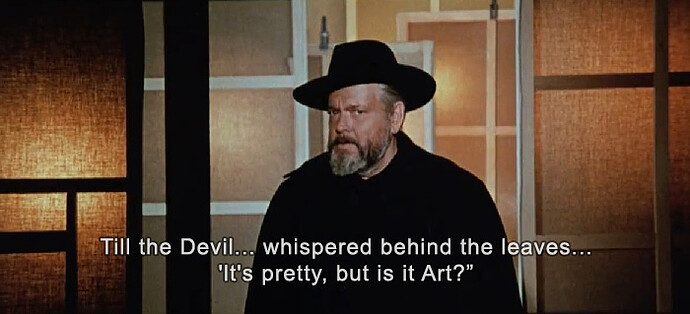Well there is a saying: Those that think they can and those that think they can’t… are both right. Beware of self fulfilling prophecies. They have a funny way of coming true.
Just some more food for though.
“You don’t make a photograph just with a camera. You bring to the act of photography all the pictures you have seen, the books you have read, the music you have heard, the people you have loved.”
― Ansel Adams
“Photography is an art of observation. It has little to do with the things you see and everything to do with the way you see them.” ― Elliott Erwitt
Photo by Jim Richardson
“If a photographer cares about the people before the lens and is compassionate, much is given.” - Eve Arnold

“I think that emotional content is an image’s most important element, regardless of the photographic technique. Much of the work I see these days lacks the emotional impact to draw a reaction from viewers, or remain in their hearts.” - Anne Geddes, known for her distinctive, stylised photographs of babies, which often incorporate floral imagery.
“Great photography is about depth of feeling, not depth of field.” — Peter Adams
“A camera didn’t make a great picture any more than a typewriter wrote a great novel.” Peter Adams
But again, yes, camera is a tool that has particular technical limitations. But many photographers fall in a trap where they think more expensive or technologically advance camera alone is what they need, so they end up buying new gear with hope it will compensate for their lack of experience, lack of vision or skill.
I would venture to say that taking a great photo with a smartphone or whatever happens to be the camera you own is critical step before investing in more expensive gear. Because it will not help much.
Of course it goes without saying, that if there is a particular technical need than one chooses the correct tool for the job. A particular tool for a particular job. This also applies to post production. If you know what you can do and what you can get away with in post production than it saves you time and cost during shooting. I’m not advocating for attitude of fixing it in post, but enhancing it in post.
Robert Genn: Many a fine style has evolved from a decent handicap.
"The higher the obstruction, the more single-minded the problem, the more the creative mind is challenged.”
—Leon Jacobs
The greatest enemy of art is the absence of limitations.
“Progress in art does not consist in reducing limitations, but in knowing them better. It is the limitation of means that determines style, gives rise to new forms and makes creativity possible.” ― Georges Braque (1882–1963), major 20th-century French painter, collagist, draughtsman, printmaker and sculptor
“I have always believed that a large part of the beauty of a picture arises from the struggle which an artist wages with his limited medium.” — Matisse on Art By Henri Matisse, Jack D. Flam
“We demand too much of technology and not enough of ourselves”.
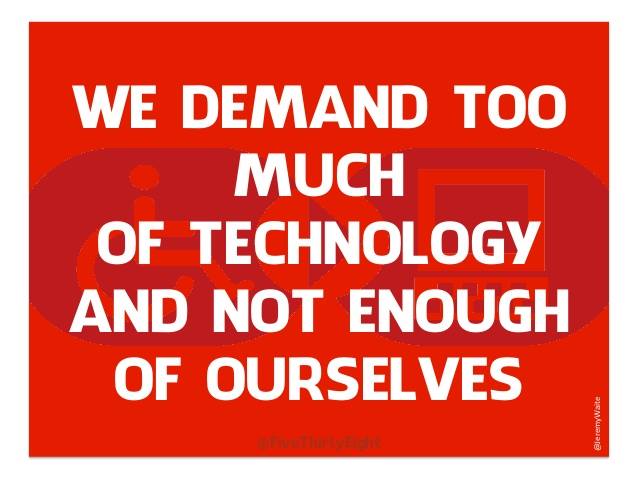
And finally few notes on the topic of style. An important topic.
Style is the artistic means, techniques and personal expressive preference of the artist, though which he realizes his interpretation.
Every job is a self portrait of the person who did it … Autograph your work with excellence. (Vince Lombardi Jr.)
“You have to utilize who you are in your work. Nobody else can do that; nobody else can pull from your unique background, from your parents, your upbringing, your whole life experience.” ― David Carson
"As a professional artist, if you wish to achieve any kind of position in the art world, you must develop a style that is distinctively “yours” - a style that, when people see your work, they will be able to identify as being from your hand, and likely from no one else. At the same time, that style has to be a large enough container within which you can grow for a long while, possibly for your entire career.
A style is almost never something you fall into. It is almost always something that you develop over time, and eventually, about which you make a considered decision. The best and most successful styles have, at their core, three basic elements:
- what you have decided, over many years of practice and work, and a process of maturing as a human being and artist, that you wish to express.
- those things that you have learned - again over time - that you are good at and want to exploit, and…
- those things that you have also learned that you are bad at and have learned to compensate for."
- Michelle Gaugy, art gallery owner, author, art consultant
A style is where your comfort zone is when you are creating. Weather that style is distinct from other styles compared to other artists depends on how uncomfortable you were before you found your zone of comfort. How daring were you in your learning the rules of composition, experimentation, attempts of copying and eventually your intellectual and emotional maturity. Or perhaps the lack of thereof.
“My advice to young filmmakers is this: Don’t follow trends. Start them!”
― Frank Capra (1897-1991), Italian-American film director, producer and writer.
“Don’t try to be original. Be simple. Be good technically, and if there is something in you, it will come out. I have simply wished to assert the reasoned and independent feeling of my own individuality within a total knowledge of tradition.” ― Henri Matisse (1869–1954), French artist
Only those with no memory insist on their originality. (Coco Chanel)
I invent nothing, I rediscover. (Auguste Rodin)
Study your craft and know who you are and what’s special about you. (Paul Newman)
A great man does not confine himself to one school; but combines many schools, as well as reads and listens to the arguments of his predecessors, thereby slowly forming a style of his own. (Kuo His)
The subject, the light, the time of day and my mood tell me how something should be executed. I am not a Photoshop filter that wishes to impose my style on all that inspires me. (Brenda Behr)
The greatest enemy of art is the absence of limitations. (Orson Welles)
The More Opinions You Have, the Less You See. (Wim Wenders)
Many a fine style has evolved from a decent handicap. (Robert Genn)
“Progress in art does not consist in reducing limitations, but in knowing them better. It is the limitation of means that determines style, gives rise to new forms and makes creativity possible.” ― Georges Braque (1882–1963), major 20th-century French painter, collagist, draughtsman, printmaker and sculptor
Our personal style depends on packaging. (Linda Doll)
It is important to express oneself …provided the feelings are real and are taken from you own experience. (Berthe Morisot)
Be who you are and say what you feel because those who mind don’t matter and those who matter don’t mind. (Dr Suess)
The style is the man himself. (George-Louis Leclerc de Buffon)
If done with genuine honesty, the work of a man is the explanation of the man. (Paul Gauguin)
Your style is the way you talk in paint. (Robert Henri)
What is style but the repeated rendering of a particular artistic emotion? (Ian Semple)
Style is simply the adoption of an arbitrary set of creative rules that one chooses from to express oneself. One develops style as selected preferences for each creative choice. (Scott Menaul)
Personal style, be it that of Michelangelo, or that of Tintoretto… has always been that peculiar personal rapport which has developed between an artist and his medium. (Ben Shahn)
“Clearly the hardest thing for the working artist is to create his own conception and follow it, unafraid of the strictures it imposes, however rigid these may be… I see it as the clearest evidence of genius when an artist follows his conception, his idea, his principle, so unswervingly that he has this truth of his constantly in his control, never letting go of it even for the sake of his own enjoyment of his work.” ― Andrei Tarkovsky
Authentic individually often involves having the ability to escape designated categorization.
The pursuit of normality is the ultimate sacrifice of potential. – Faith Jegede
Style is knowing who you are, what you want to say, and not giving a damn. (Gore Vidal)
“My mother said to me, ‘If you decided to be a soldier, become a general. If you decided to be a monk, become the Pope.’ Instead, I decided to be a painter, and became Picasso.” - Pablo Picasso
…However.
In the abstract, philosophical sense… “One photo out of focus is a mistake, ten photos out of focus are an experimentation, one hundred photos out of focus are a style.” or as Alfred Hitchcock says: “Self-plagiarism is style.”
Create your own visual style… let it be unique for yourself and yet identifiable for others. (Orson Welles)
Showing a cohesive coherent consistent selection of artwork is how you establish an identity for yourself and your brand as an artist. And it is also the way you effectively communicate to viewers exactly what your brand is about. First and foremost, you have to have a vision, and everything you exhibit and offer for sale should exemplify that vision. Randomness, lack of direction and inconsistency in your choice of art and topics, on the other hand, practically assure that you won’t be in business long.
"Artists tend to have a signature style. For Magritte, his later work is considered more iconic; for Warhol, many critics consider his early silk-screen paintings to be his most important. Some artists have more than one signature style. Gerhard Richter, for example, makes both colorful abstract paintings and blurred photorealist paintings. But he is more the exception than the rule. Just as there is a hierarchy of artists associated with an art movement, there is also a hierarchy that helps to define the relative importance of work produced by an artist. Iconic work is premium priced. The further you get from it, the sharper the fall off in price. This tends to be true for every medium in which the artist worked.
The degree to which a work is iconic depends on answers to some very practical questions of ascetics, such as: Is it beautiful? Is it a large work? Is it the best in the series? Does it use the right colors? Answers to these questions impact value, especially the question about color. Look no further than the marketplace for abstract work by Gerhard Richter to understand the relationship between color and price. When his abstract paintings come up for sale at auction, collectors are willing to pay more for red and blue over green and orange. "
— Art Collecting Today: Market Insights for Everyone Passionate about Art (2017) by Doug Woodham (Author)
BEWARE!
The best thing commercially, which is the worst artistically, by and large, is the most successful. (Orson Welles)
Nothing Recedes Like Success. (Bryan Forbes)
Once you’ve built your reputation on a particular signature style, it can be hard to wriggle your way out of the straitjacket of your own brand identity. After all, where does distinctively recognizable end and stalely repetitious begin? (Judith Palmer)
e.g. Françoise Nielly is a French knife-painter who is famous for painting vibrant and colourful closeup portraits of people. View the gallery by years and see why she is so successful commercially in having a very recognizable and distinct style, but has not grown as an artist at all.
P.S.
“I was very embarrassed when my canvases began to fetch high prices. I saw myself condemned to a future of nothing but Masterpieces. Did not the artists of the great age of Japanese art change names many times during their careers? I like that; they wanted to safeguard their freedom.” ― Henri Matisse (1869–1954), French artist
“It is the limitation of means that determines style, gives rise to new forms and makes creativity possible.”
― Georges Braque (1882–1963)
If you only work for yourself, then it’s about genuine expression, If you only work for others as a laborer than you will probably have to compete on price, and there is always someone more desperate to reach rock bottom piece faster tan you. So really, one way to protect yourself is with a distinct style. Unique to you and recognizable to others.
All the techniqe and cameras aside, its an important topic that I think is more valuable than any camera or lens you can buy.
"It took me a few seconds to draw it, but it took me 34 years to learn how to draw it in a few seconds "
— Paula Scher, American graphic designer, painter and art educator in design
“Femme” sketch by Pablo Picasso (1881-1973)
Probably the beginning of April 1931
13 in (34 cm) X 18 in (45 cm)
The legend goes or more accurately; a version of the legend goes as follows…
The famous Pablo Picasso was at a party sketching when a woman approached him.
She recognized him and after approaching the Master. She asked, “Will you create a sketch for me?”
The famous Picasso agreed and he began sketching.
After spending about five minutes doing what Picasso does best on his sketchpad.
He quickly rips of the sketch off the pad and hand it to the woman, saying to her, “That will be $10,000.”
After initial shock, the woman pulled herself together and finally screamed at the master;
“Ten thousand dollars! What the hell for? It only took you five minutes to draw that sketch!”
To which, Picasso calmly replied, “No, madam. It took me a lifetime.”
Paraphrased from How to charge, one of the archived posts on 1099 — The magazine for independent professionals.
“An artist is not paid for his labor but for his vision.” said James Whistler.
If you don’t have a vision and style to market, regardless of technical ability or gear, in the end you will be condemned to compete on price and that is very insecure position.
A friend from Austria was shooting weddings, and he said someone started photographing with a f1.2 lens and very shallow depth of field. Thing became a trend in local area so other photographers bought the same lens and pretty soon everyone was shooting the same, leaving competition with price.
But you can’t buy photographers vision and experience, and if he can market it, he will be better paid and more secure because he is more protected.
Just my 2 cents. Cheers!
.

